10 keys to mobilise strategic communications coalitions
This Strategic Communications Incubator resource introduces new practice-based insights into how to effectively build, organise and maintain a coalition to support and deliver narrative and policy change goals.
Why these keys?
Given the wide-reaching systems-level ambition of strategic communications, a basic premise is that this work needs to be done at scale and so, there is a need to work in networks or coalitions of partners. Collaborating effectively in coalitions is widely recognised as challenging. Having had significant experience of supporting such coalitions, we have seen a similar pattern of challenges emerge which can limit the impact of the work and where, in the worst-case scenario, coalitions can become spaces for internal competition, political manoeuvring, stagnation, and ultimately, become ineffective at working towards their goal.
We draw on lessons from experienced practitioners about how to approach strategic communications collaborations, which can be summarised as follows: avoid consensus-maximising approaches1 and embrace a smart networks approach2 . Essentially, this entails managing the different capacities and contributions of the diverse group of members so that the shared movement goal is kept front and centre. This shift, together with the essentials of strategic communications practice, inform the focus of this set of keys.
It’s important to note that we’re not focused on coalition building in general. When it comes to changing narratives at scale, a different kind of thinking is needed and a different kind of infrastructure must be built. The lessons we offer aim to support networks working towards a shared narrative and policy change goal.
How were the keys developed?
As well as drawing insights from our 10 years of hands on practice supporting networks of practitioners in delivering long-term narrative and policy change, we’ve picked the brains of key strategic communications coalition builders (especially Frank Sharry from America’s Voice,3 Corey Saylor from ReThink Media,4 and Rashad Robinson from Color of Change5 ). We have also delved into the theory and practice of smart networks6 , organising7 and movement building.8
Our approach to presenting these lessons as “keys” is inspired by our “12 keys to reframing the migration debate” resource which was very well-received and proved engaging for multiple partners, with more than 5,000 copies already shared in four languages. However, they are not an updated version of older keys and only focus on one the challenge of working in coalition.
You can also download this resource as a printable PDF
| In English |  |
| In German |  |
| In Russian |  |
10 keys to mobilise strategic communications coalitions
| Key | Explanation |
 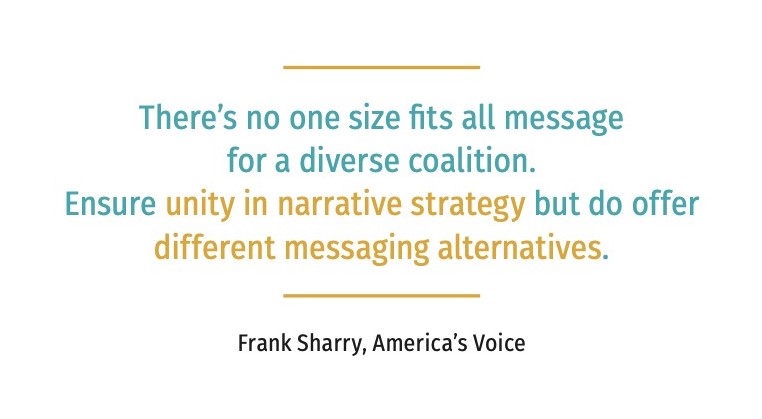 |
This lesson on practice warns that in a diverse network, a 'one message fits all' approach to messaging is bound to fail. Coalition members shouldn’t expect that everyone is willing to say exactly the same thing. Instead, in the design of a narrative strategy, there needs to be enough space and freedom for advocates to message on the different value appeals, frames and entry points that feel authentic and honest to them. This diverse messaging approach also fits well into a harmonised narrative strategy where different value appeals and messages are needed for different types of audiences, e.g. supporters and sceptics. Leaving this space helps to maximise mobilisation in the coalition. |
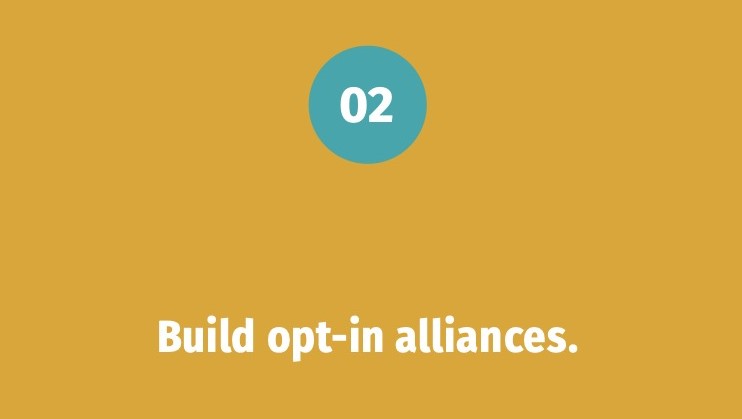 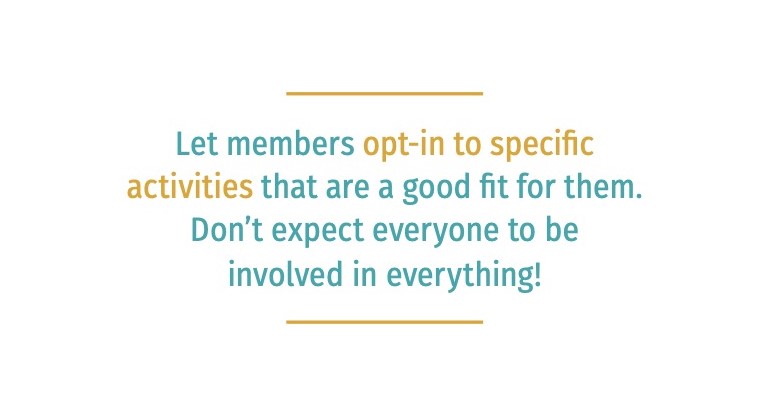 |
This lesson on strategy advises that it’s better not to demand support nor pressure involvement from all partners, because not all coalition activities will require or suit everyone. Better outcomes will follow if members can opt-in to specific strategic communications activities depending on their motivation, availability and capacity for the work. For example, there will be some members of the group whose core competency is policy work, and others who have extensive experience in organising online mobilisation of young influencers. So, it's wise to build a structure that enables alliances to form and dissolve around specific initiatives. |
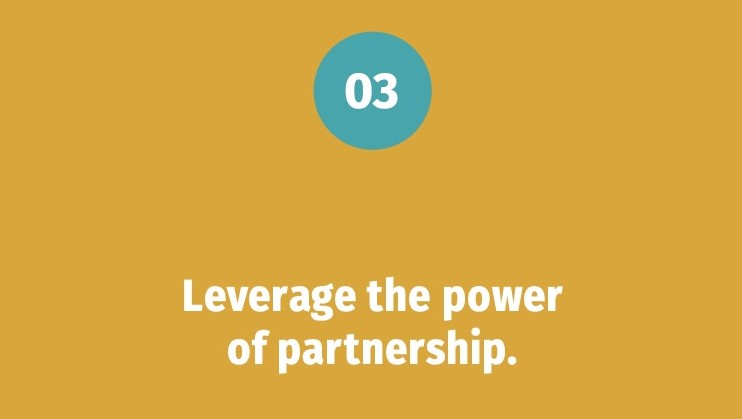  |
This lesson on strategy is a more general aspirational point about collaboration: members shouldn’t simply work together, but collaborate in a way that maximises their individual roles, resources, skills, capacities and access to the wide range of target audiences needed to achieve narrative and policy change goals. When everyone does what they are really good at, it will be motivating for all (see key 2) and will lead to better outcomes. It’s best in a coalition to try to avoid that feeling among members of being stuck with a task that's way outside their comfort zone or focus. |
 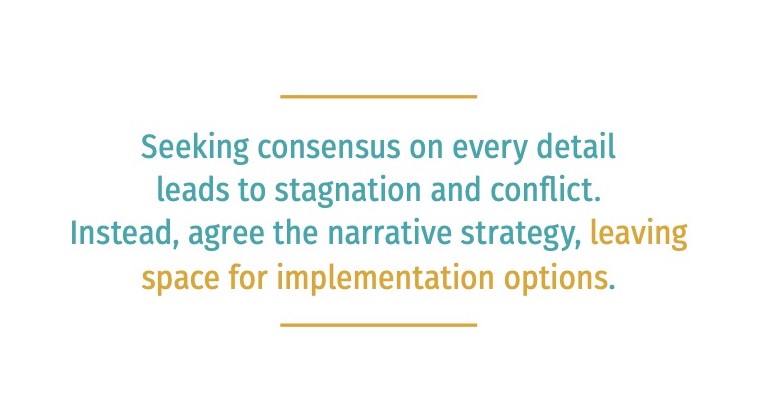 |
This lesson on strategy cautions that coalitions will inevitably get stuck in never ending negotiations if they aim for agreement on all the details of their shared work. In order to keep things moving, it’s better to agree on the advocacy strategy, messaging and points of leverage for the coalition, but let individual members or groups plan how best to deliver the strategy in practice. In other words, try to agree minimally, not maximally. |
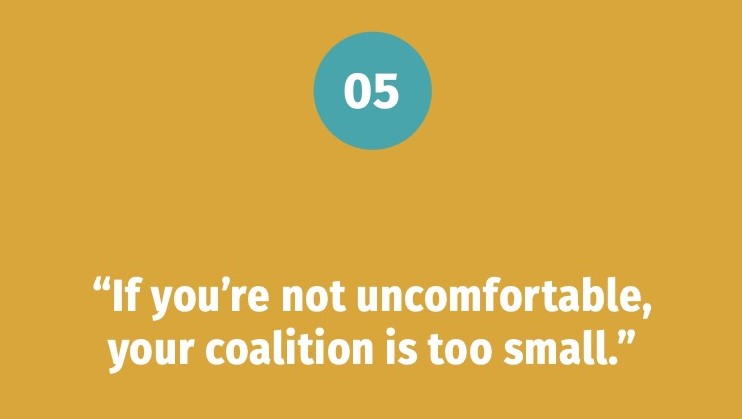 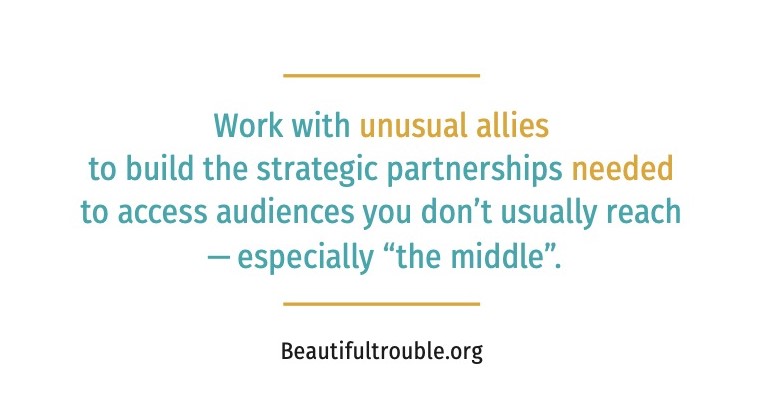 |
The rationale behind this lesson on practice is that it is not enough for coalitions to only work with existing supporters if the ambition is to change norms at scale. Coalitions must also engage public audiences beyond their echo chamber/bubble – such as 'the moveable middle' – in order to gain sufficient support and acceptance of new narratives and ensure such changes are widespread enough (see key 6 for more). |
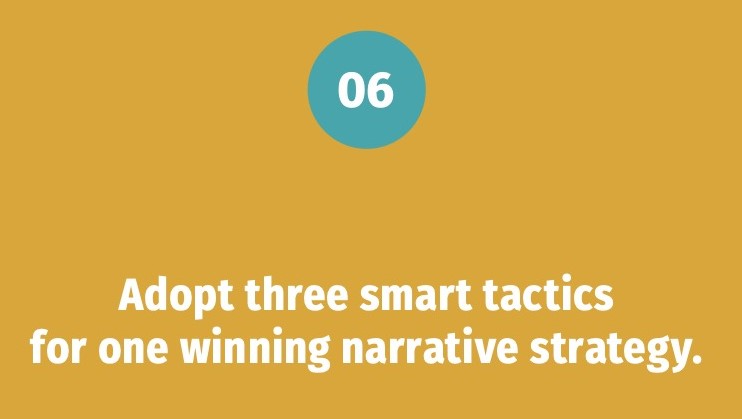 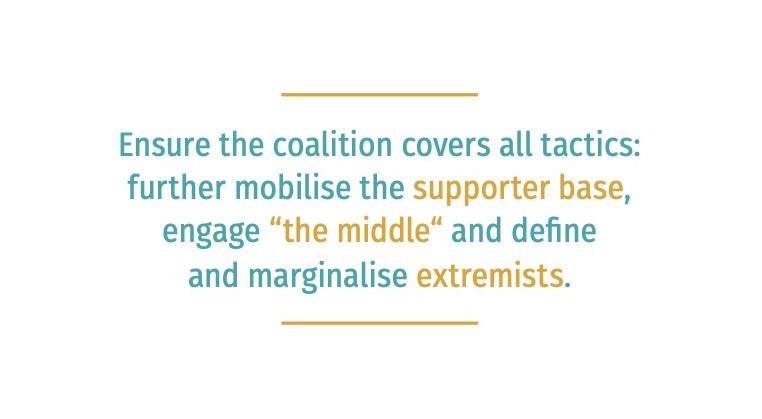 |
This lesson is a guiding principle of strategic communications. Based on extensive polling, the 'public' in many countries is comprised of approximately 15% supporters, 15% opponents and 70% in the moveable middle. An effective strategic communications coalition will find the right balance of members to target different segments of the public with the different tactics needed to serve the broader movement aim. At the heart of this mixed tactical approach is the fact that coalitions need to broaden their target audiences, especially considering the numbers and untapped potential are in “the middle”, in order to win the public debate and gain sufficient support for proposed changes in policy/law. |
 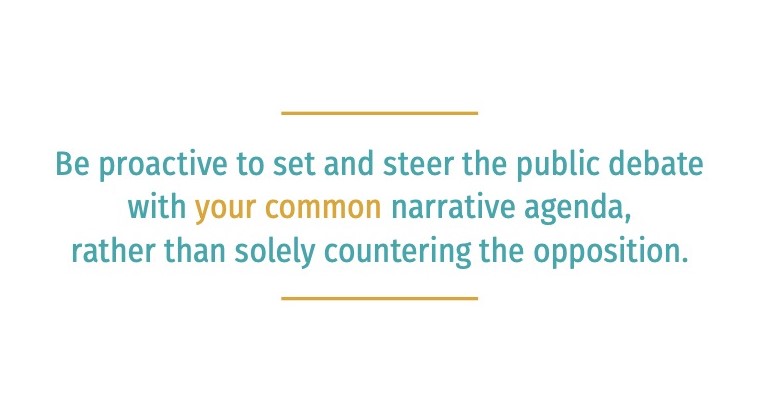 |
This lesson is a guiding principle of strategic communications. It warns against advocates spending all their time and energy countering opposition narratives because this leads to a backfire effect, according to framing expert and Cognitive Linguist, George Lakoff: “if you negate a frame, you evoke a frame”. Instead, a strategic communications coalition will proactively aim to lead the debate in order to set the agenda with their values and the story they want to tell. We are not saying that opposition positions shouldn’t be challenged, but work to ensure that your proactive communications is more prominent than your reactive outputs. |
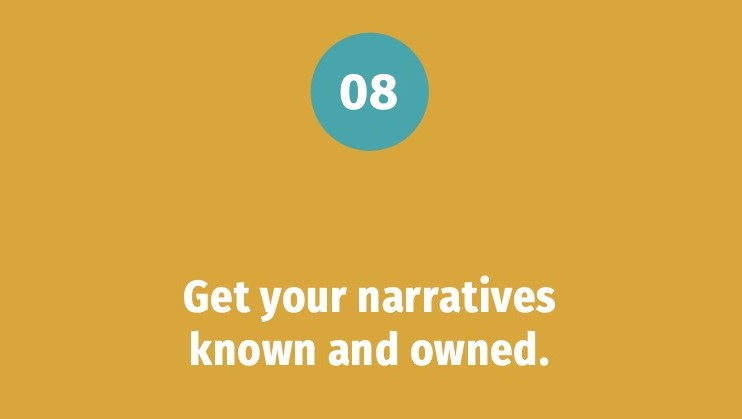 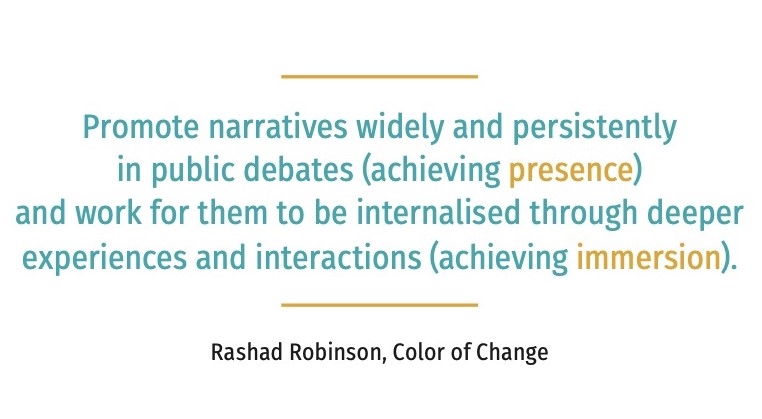 |
This lesson is part of our theory of change of strategic communications (inspired by Rashad Robinson). We see strategic communications as the long-term process of transforming public narratives that shape the boundaries of political and public acceptability on policy and legal decisions. To sustainably shift these boundaries, advocates need to: build consistent voice, visibility and surround sound of their narratives in media spaces, so that narratives become broadly known (or achieve presence); and also design and implement engaging interventions to socialise narratives in everyday thinking and practice, so that narratives are owned and brought to life (or achieve immersion). |
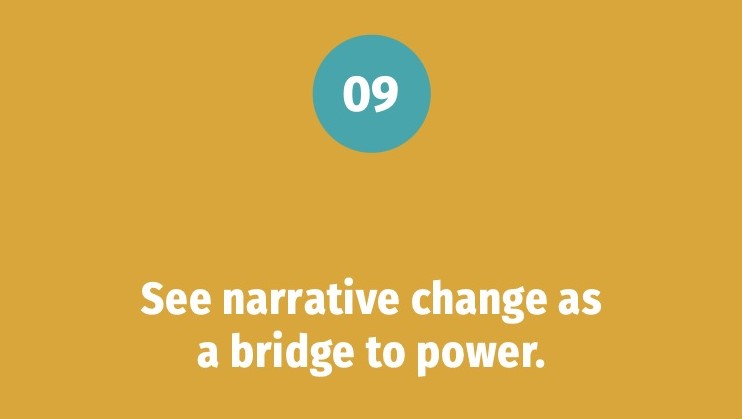 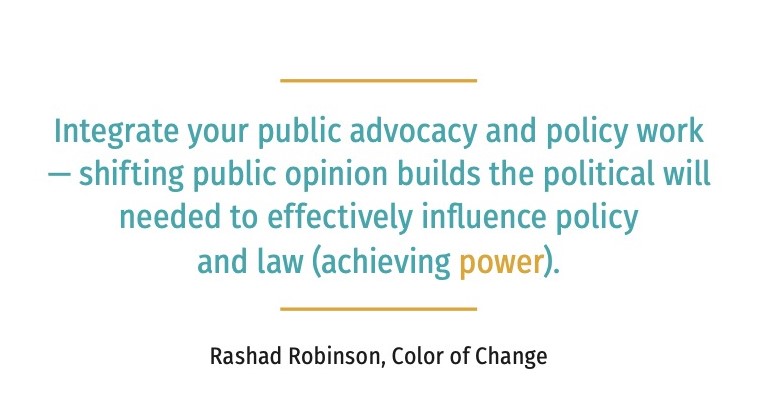 |
This lesson is also part of our theory of change of strategic communications. By ensuring that the target narrative is not only known (achieving presence) but also owned (achieving immersion), a strategic communications approach aims to catalyse a shift in existing norms and build the public support and political will to prepare the ground for changing the written rules of policy/law. Therefore, close co-ordination of public and policy advocacy work is key. |
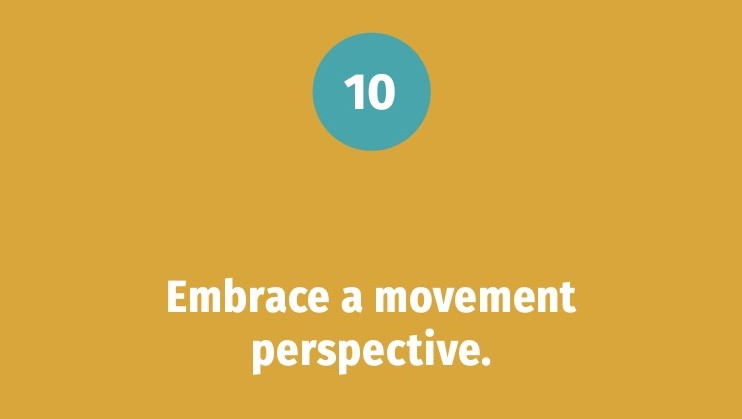 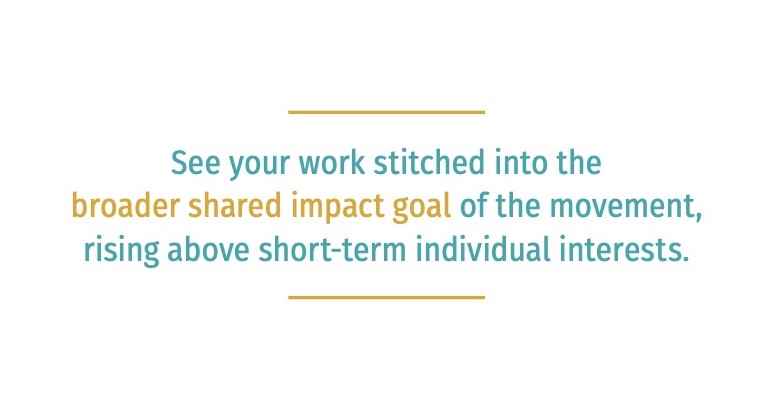 |
This lesson on strategy is about a mindset shift. Advocates should place the longer-term strategy of the social movement in focus during planning and implementing work, not just the goals of their individual organisation. They should practice a "give to get" mindset of radically sharing of lessons learned and resources, as well as maximising collaboration and minimising competition. |
This resource was funded by the Federal Ministry of Family Affairs, Senior Citizens, Women and Youth, and the Robert Bosch Foundation. The English version was funded by Open Society Foundations.
This publication does not express the opinions of BMFSFJ or BAFzA. The authors are solely responsible for the content of the publication.
- 1Mortensen, G (2017). 10 Things You Need to Build Clever Coalitions. Stanford Social Innovation Review.
- 2Waitzer, J M and Paul R (2011). Scaling Social Impact: when everybody contributes, everybody wins. Innovations: Technology, Governance, Globalization, 6/2, p. 143–155.; Kani, J and Kramer, M (2011) Collective Impact. Stanford Social Innovation Review. Winter 2011.
- 3International Centre for Policy Advocacy (2021) Video: Strategic Communications in Action Series - Case 3: Frank Sharry (America's Voice).
- 4International Centre for Policy Advocacy (2022). Winning the narrative space around the Muslim Ban: lessons on how to achieve “presence” in the public debate; Lanzke, A. (2021) Presence instead of press release. International Centre for Policy Advocacy; International Centre for Policy Advocacy (2021). Video: Strategic Communications in Action Series - Case 1: Corey Saylor (Re:Think Media).
- 5Robinson, R. (2018), Changing our narrative about narrative: the infrastructure required for building narrative power. Color of Change USA.
- 6Waitzer and Paul, ibid. Kani and Kramer, ibid.
- 7Blueprints for Change (2018) - How-to draft: Building Networked Coalitions; Blueprints for Change (2018) - How-to draft: Distributed organising; McLeod Grant, H (2014) - Pioneers In Justice: Building Networks and Movements for Social Change.
- 8Mortensen, ibid.